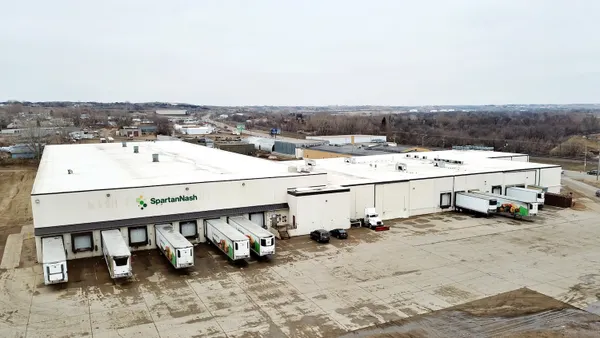Dive Brief:
- With the belief that brick-and-mortar grocery is here to stay, many grocery stores are turning to innovative design and unconventional store layouts to create better customer experiences and maintain successful operations, according to a recent article in Progressive Grocer.
- The article highlights a number of grocers who are remodeling their stores with design as a top priority. Some stores are utilizing in-house design teams who have a deep understanding of their customers, while others are working with outside design firms that can offer an eye for trends in retail.
- Among the current innovations in store design, many grocers are putting high-quality, fresh food and convenience front and center. Other stores are placing major emphasis on designs that reflect their locale and the demographics of their shoppers. Self-serve opportunities, tech-driven features and unique in-store experiences are also showing up in new store designs.
Dive Insight:
Despite the continued rise in online grocery shopping, it is clear that many customers still value the physical in-store experience. But they want more than the traditional grocery floor plan that they’ve know for so long. Progressive Grocer highlights Gelson’s Markets, located in Encino, California, which is introducing a “Sip ‘n Shop” service where customers can have a drink or snack at the store’s bar while a store employee does their grocery shopping for them. Bashas’ Diné market in Window Rock, Arizona, celebrates the local Navajo community with artwork from local artisans hanging around the store.
Elsewhere, Albertsons recently unveiled an experience-focused store in Boise, Idaho, that offers culinary classes, craft beer, a restaurant and a concierge. In Sacramento, California, Raley’s introduced Market 5-ONE-5 earlier this year, a neighborhood market focused on organic, sustainably sourced foods, freshly prepared meals and socializing – with beer, wine and kombucha on tap. Last year, Hy-Vee opened a specialty store in Des Moines, Iowa called Fourth + Vine that offers hard-to-find products, an old-fashioned soda fountain and onsite dry cleaning. In Portland, Oregon, Basics Market will open next month with a large classroom space and special displays built around meal assembly.
While there are a number of factors at play in many of these store redesigns, a common theme seems to be creating a new experience for customers. Grocers now, and in the future, want to be destinations where food is not just a need, but a centerpiece of socializing, community and learning. And, as shoppers become more conscious of where their food comes from and what’s in it, they are demanding a different in-store experience.
As grocery design continues to evolve, the store footprint could be completely reimagined. Some stores may cut back on square footage completely, offering smaller storefronts with freshly prepared food, beer and wine or bakery items. Larger grocery spaces could be repurposed as culinary classrooms, state-of-the art kitchen or food production space, or simply warehousing for inventory and e-commerce fulfillment.
Today, shoppers can get most products at multiple stores. What motivates someone to choose one store over the other has traditionally come down to price, but as more stores offer more interesting design and features, shoppers will likely select their grocery destination based on the experience it offers. For example, if a store offers a cooking class, there’s no reason a shopper wouldn't stay there to complete their grocery shopping once the class is over.
This leads to a big question, however. If every grocer gets innovative with its store design, will unique in-store experiences and unconventional layouts really be a draw for long?













